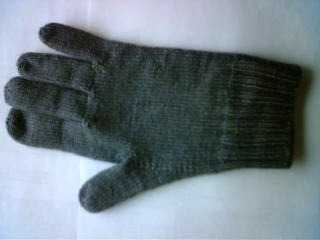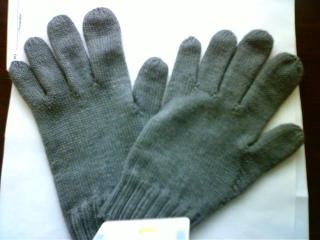I’ve talked about this before, but every so often the questions come up again on one or another spinning list. So one more time, let’s talk about spinning for socks. Remember, you’ll go through similar steps when spinning for any specific project! But that's another day's posting.
Your mother probably told you that everybody is different, and she was right. Every sheep is different, too. While there are general breed characteristics that mean you probably wouldn’t want to spin Lincoln or Churro for a baby layette, there are also exceptions to the standard. Shepherds can, to a marked degree, breed for softness, fineness, crimp or luster in their flocks. And cross-bred sheep can show the best of several ‘parent’ breeds. My favorite sock yarns come from a Shetland-Romney cross ewe who belongs to a friend. Since she’s getting up there in years, I’m glad two of her daughters’ fleeces show the same characteristics.
Generally, you’ll choose a fleece for socks that is medium-soft, medium-long, and medium-crimpy. A Bradford count between 50 and 58 is ideal for a sock fleece. This means a Romney, Shetland, Border Leistershire or Finn, if you go strictly by the breed characteristic. But I’ve spun Lincoln lamb with a count of 52, and it made wonderful, heavy sock yarn. Down breeds like Suffolk and Dorset are springy and almost impossible to felt. Some individual down fleeces are too coarse for anything but rugs, but some are perfect for socks! So don’t rule out ‘coarser’ or ‘meat’ fleeces until you check them personally. They may be exactly what you’re looking for!
Life has a way of wreaking havoc with generalities, coming up and biting you at the worst times. What if all you have on hand is 6 ounces of hand-painted 64’s merino roving and you need a pair of socks for a gift in just a couple of weeks? You have time to spin prepared fiber, but not enough time to purchase a fleece, wait for it to arrive, clean it, dye it, comb it (the best socks are always from worsted prep) AND spin it, then knit the socks! Besides, the painted roving is in perfect colors for the gift recipient, and you don’t have the right colors of dye on-hand, even if you had a proper fleece in the stash.
So spin the merino already! Spin it fine, worsted and with quite a bit of twist – use one of the smaller whorls on your wheel or a lighter drop-spindle. Aim for a singles of about 45 wpi. Once you have at least 110 grams of singles, start plying. (Yes, I know you can make a pair of socks from 100 grams – but what do you do about giving darning yarn with the socks? Making your gauge swatch? Spin the extra 10 grams – it will take you less than a half-hour.) If you spun that wonderful painted roving with fairly good color definition, consider Navaho-plying to keep those colors bright. Ply carefully, from a tensioned bobbin, and go slooowly. Keep the twist consistent, and put in a bit more than you need for a balanced yarn. As long as your twist is sufficient, nobody will ever feel the ‘bumps’. On the other hand if the roving gave you lovely heathery singles, consider cabling for a 4-ply yarn. It will make for a slightly larger-grist yarn that you can knit on larger needles – a consideration if you’re afraid of size 0 or 1 double point needles. (Although you really should get over that.)
Wash or steam the plied yarn to set the twist. You may want to dry the yarn slightly weighted, just to control the extra twist. Yes, I said extra twist. You don’t want a yarn that’s kinky-curly, but you do want a couple of twists along the length of the hank. It will help those fine fibers wear better.
After the yarn’s dry, make balls and start swatching. This will take up at least some of that extra 10 grams of yarn. Start out with needles no larger than the yarn diameter. Say what? Yes, I said to start with needles no larger than the diameter of the yarn itself. But that may not work – you may need to go down a needle size or even two. You want a
very firm fabric. At least 8 stitches per inch, if you’ve made sport-weight yarn – 9 to 12 stitches per inch for sock-weight yarn. No, the finished socks won’t stand alone. They will be quite tightly knitted, but that’s what you need. Even straight 64’s merino (no nylon, mohair or other reinforcement) that’s spun tightly, plied tightly, and knitted very firmly will give you fairly decent wear. How can this be? Let’s take another look.
You’ve partially countered the fine, soft wool’s tendency toward felting by putting in extra twist, thus making the fibers compress more than you would want for a sweater yarn. The ends will have more trouble escaping from that extra twist, and should pill less. You’ve spun finely, and firmly plied at least three singles together, and possibly four. Those multiple plies from thin singles should also help with abrasion and pilling. Then you’ve knitted that firmly twisted yarn at a very firm gauge, leaving it very little room to move around and felt. While you won’t get five years of once a week wear from these socks, you will get at least two years, three if you’re careful about washing.
There! You’ve successfully made a decent pair of socks from fine wool. Don’t let anyone tell you it can’t be done. But now that you’ve finished with the current emergency, let’s talk about the
best handspun for socks.
Say you want to back up and make those 5-year socks…you’ll want to re-read my notes about appropriate medium wools. Choose one of them, either as a fleece or as prepared top. Again, worsted prep is best, since it gives you the best resistance to abrasion. Spin as close to a worsted single as your temperament will allow.
What grist? It depends on the fleece. Socks will wear best if made from a tightly-spun yarn. But sometimes a single push of the treadle can make the difference between a firm yarn and a harsh one. I know you get tired of hearing ‘sample’ but you really do have to get over it. Look at sampling as shopping – you wouldn’t buy a soft-spun singles alpaca-wool blend for socks, so don’t spin one. Or look at sampling as exploration. You’re charting the potentialities of this particular fleece or roving or top.
There are a couple of things to keep in mind, though, as you spin those singles. First, you need at least two plies, preferably three in the finished yarn. If you want to make socks from singles, look back at this blog entry for my thoughts on the subject:
http://fiberlife.blogspot.com/2005/06/todays-rant-and-sock-tutorial.html. Have you read it? Great – now it’s up to you. If you want to spin for hard-wearing socks, continue to read here.
My favorite sock yarns are cabled. Yes, I know I have to spin more singles yardage in order to cable the finished yarns. And I’m aware that I have to spin finer in order to end up with a sock-weight cabled yarn. But my knitting time is limited by the other things in my life. It’s much better in the long run to make socks that will last awhile, thus leaving more knitting time for things like sweaters and lace shawls and gloves and hats. My usual sock fleece or top is around 54-56 count. I haven’t found nylon to be particularly necessary in medium wools, although I have been known to blend it into the finer 58-62’s fibers. I usually spin this medium wool worsted-fashion at about 36 wpi as singles. This is not the time, however, for the small whorl on the wheel. I’ve learned that the best ratio for spinning this fiber firmly, without going over the line to harsh, is about 9.5:1. Yes, I sampled several fleeces and prepared tops to determine this.
I spin the singles counterclockwise (Z), and ply the first time clockwise (S). Then I ply the resulting two-ply yarn again, counterclockwise. I end up with a nice sock-weight yarn of about 18 wpi.
When it’s time to knit, I again choose needles that are about the same diameter as the yarn. That means 1’s, maybe 2’s. That gives me a gauge of somewhere between 7 and 10 stitches per inch. You want a firm fabric for the same reasons that you did in the finer wools – it will wear longer, with less pilling and felting. It will also feel better on the bottom of your feet - no uncomfortable rubbing after a couple of hours. You have to remember that you’re working with handspun – do a large (24-30 stitches) circular gauge swatch and measure over at least 2 inches in at least 2 different places on the swatch. As spinners, our yarn is subject to some variation.
If you prefer to make toe-up socks, a gauge swatch is still a valuable reference, as it can keep you from having to frog and re-work the toe cast-on several times. You can start out with the needles that give you the fabric you want. Remember, you still need a firm fabric.
The other variable is fit. You can check the previous reference on my blog for fit hints. But socks that slide around on your foot will require much more extensive and frequent darning than those that fit properly, regardless of the fiber you’ve chosen. Socks, in case you haven’t already figured this out, require negative ease. For those who haven’t clicked back yet, I’ll explain briefly. When you’re making a sweater, you want to add anywhere from 5 to 15 percent of your skin-level circumference in order to arrive at your finished dimensions. That’s because sweater fabric is thick, taking up some room (up to two inches total in bulky yarns), and sweaters insulate and look better if they aren’t skin-tight. Socks, on the other hand, need to be skin-tight in order to provide the cushioning your foot requires without taking up too much room in your shoe. So you want your sock fabric to be slightly stretched during wear.
If you follow the above instructions you
will make well-fitting, long-wearing socks from your handspun - or from commercial sock yarn.
What about making socks from luxury fibers? I really haven’t tried much of that. I did put angora cuffs on a pair of socks – the angora felted long before the wool, and I had to cut it off and re-knit the cuffs from wool. I made one pair of socks (at my father-in-law’s request) from a 50-50 wool-kid mohair blend. He loves them, and is still wearing them six years later. But I thought then and still think that the fabric is just too scratchy! My next experiment (when I get around to it) will probably include some alpaca, simply because I’m on an alpaca ‘kick’ lately. But right now I’m happy sticking to wool.




